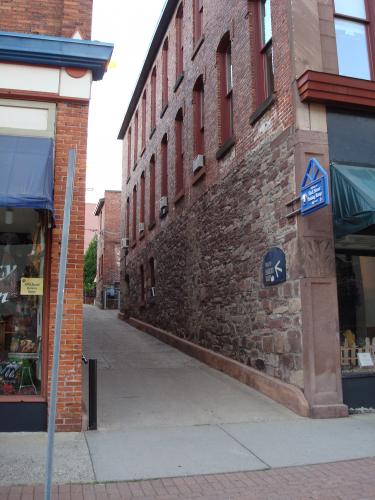An argument for alleys
Alleys can lead to a better integration of automobile and foot traffic in a neighborhood which creates improved access and walkability.

Alleys provide a space for open air, utilities, access to trash and even a bit of shade. Alleys and lanes function as access to private spaces and the rear of lots. These street types are one lane wide and also provide access for services such as waste and recycling pickup. They can range from unattractive places to green, organic, distinctive spaces. A near perfect alley is complex, a place to socialize, with good lighting, low-traffic speed and a place for commerce and living, all while handling utilities.
Alleys serve several key functions for form as well. With rear alley access, there is no need for a driveway entrance from the street. This allows for narrower lots, greater density, less disjointed frontages and greater walkability.
Pedestrian-only alleys are an option to increase connectivity in urban core settings. Improved access for pedestrians is the single goal. Opportunities to create these types of alleys could come about by converting existing vehicular alleys into pedestrian-use only, as access rear parking by a rear or parallel street, or could be a former building space that was razed to create improved access to the main street.

There is a safety component and lighting is an important consideration. Maintenance is also a key aspect and if the alley looks dirty and un-kept, it will not be used. A poorly lit, unmaintained alley has visual perceptions of not being a safe place and people will not enter that place.
Done right, alleys can become special places in the neighborhood.
For more information on how a community can take advantage of its alleys contact Michigan State University Extension or contact a Land Use Educator for more information on these issues facing communities.



 Print
Print Email
Email



